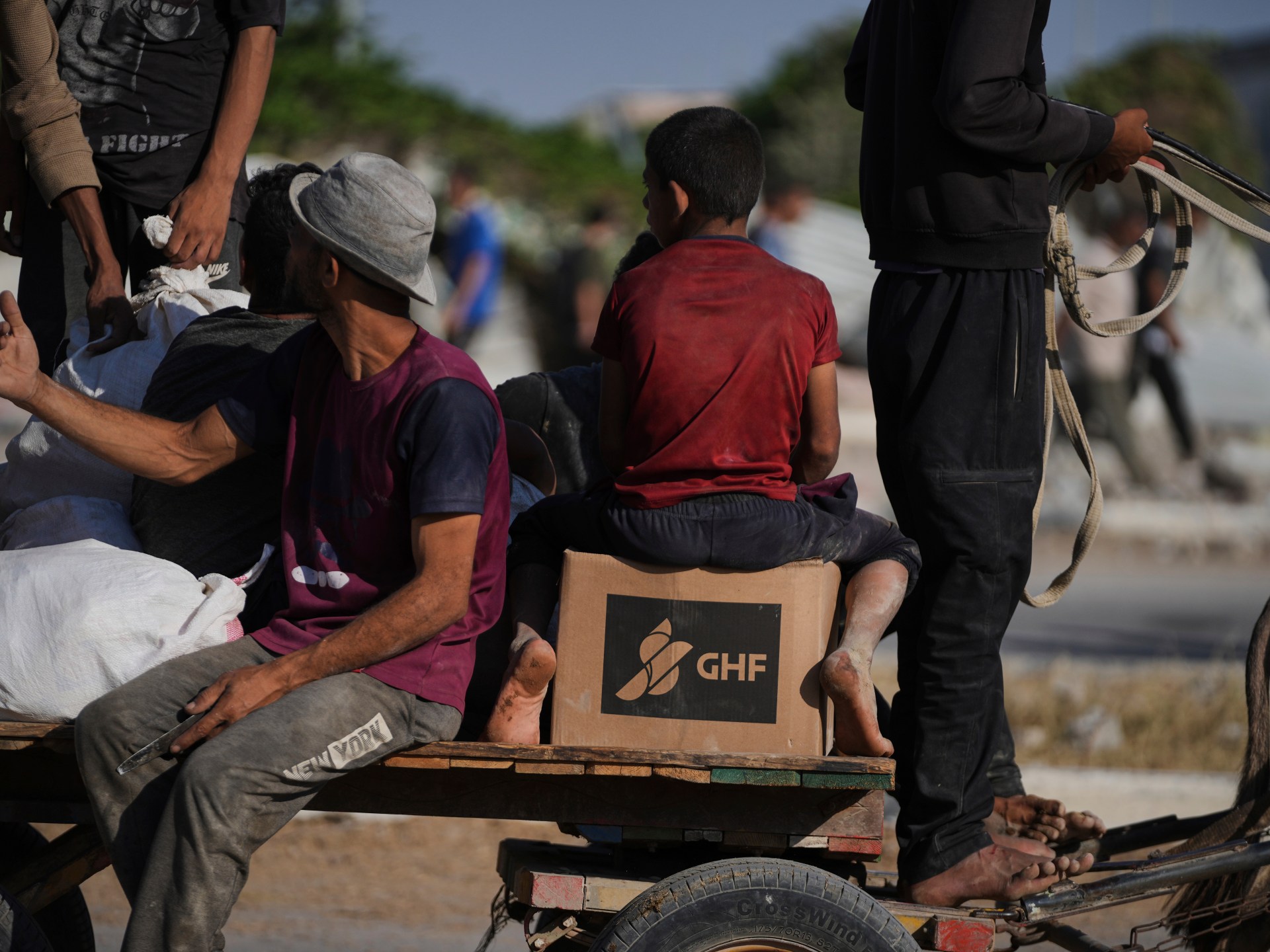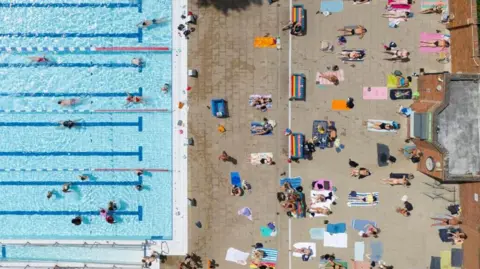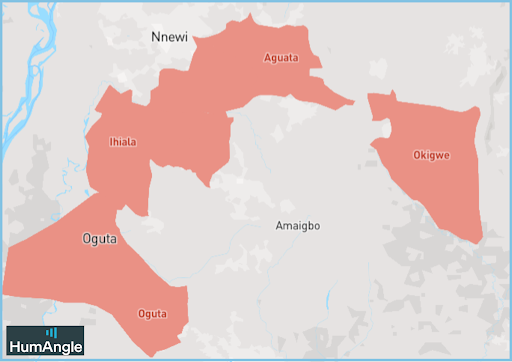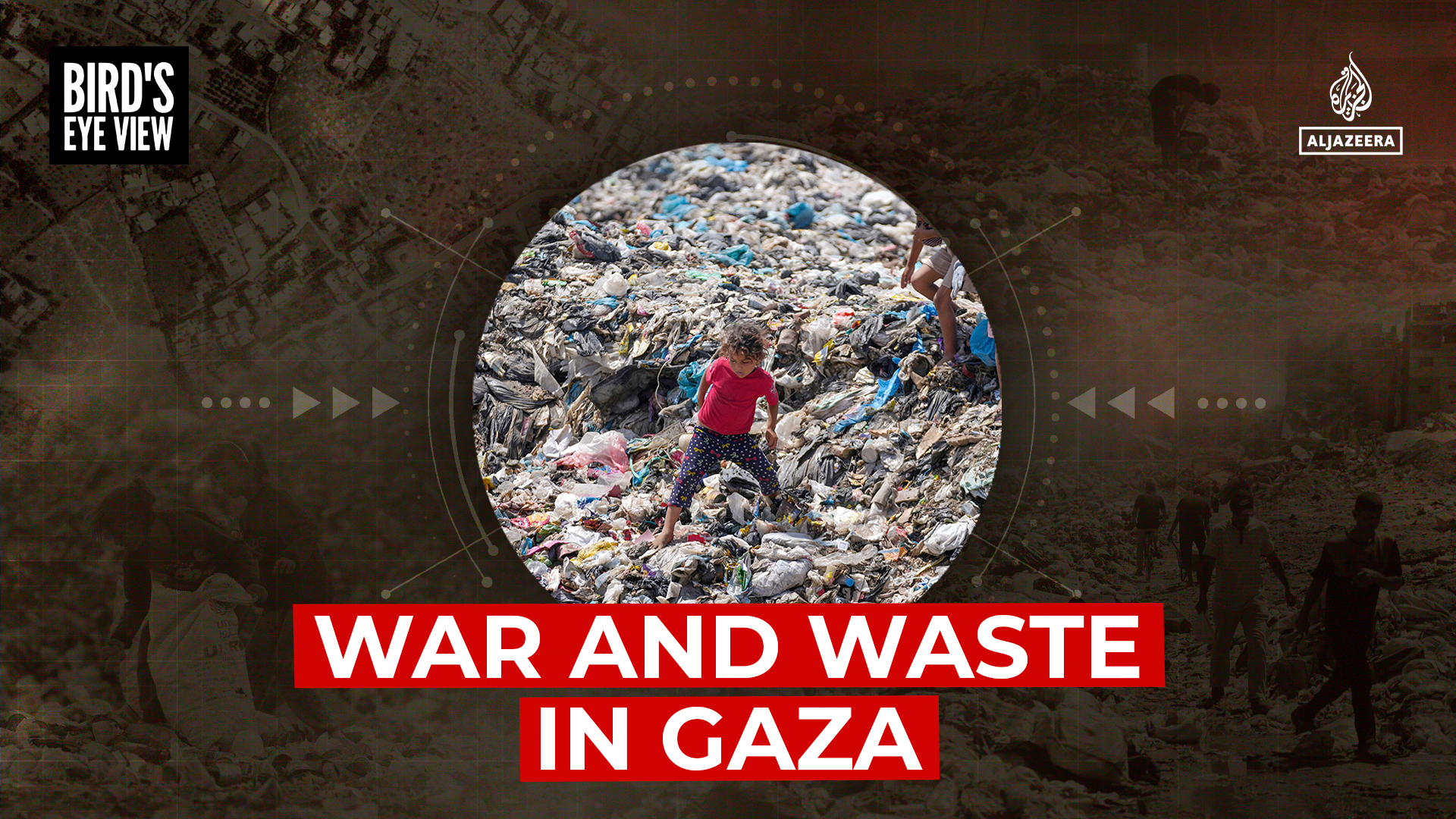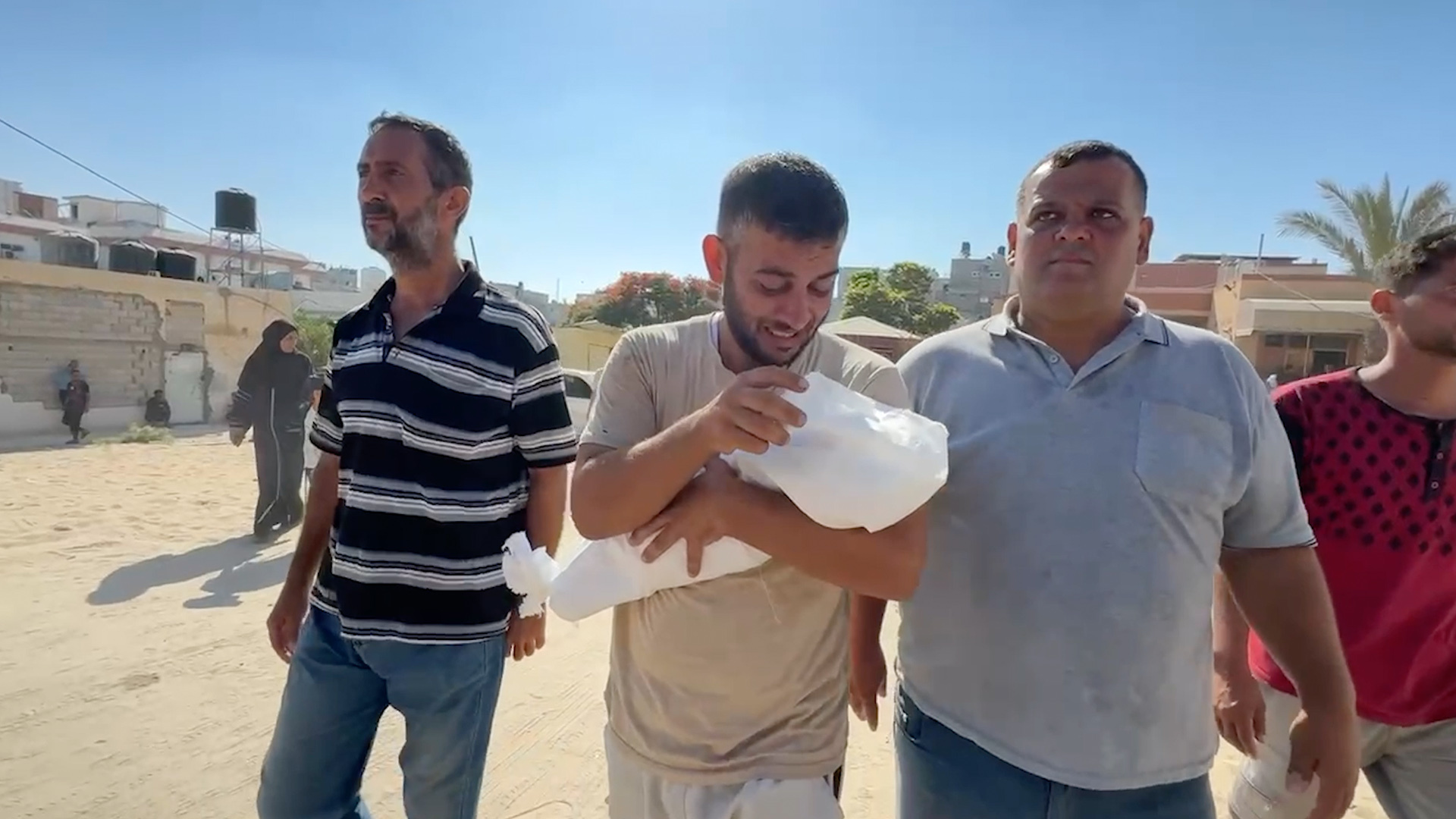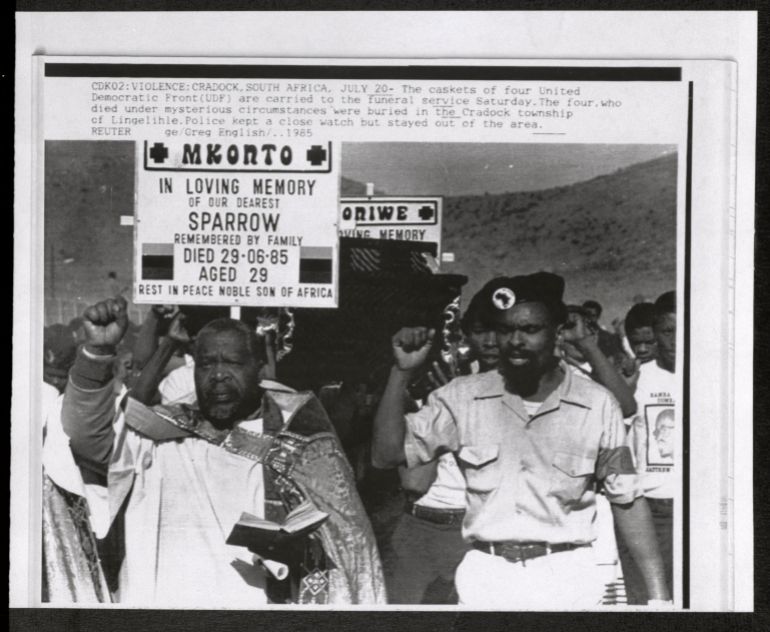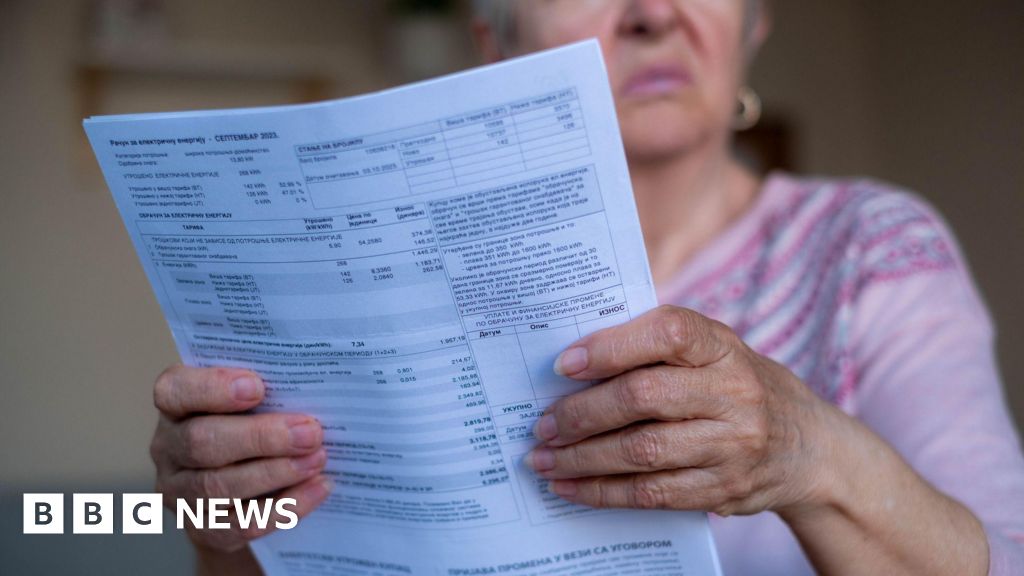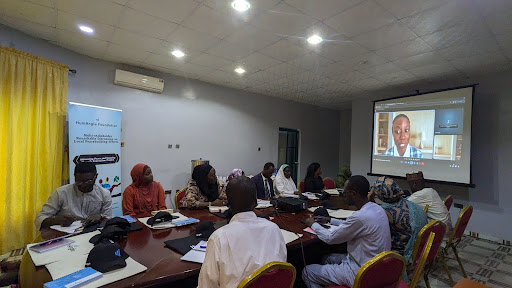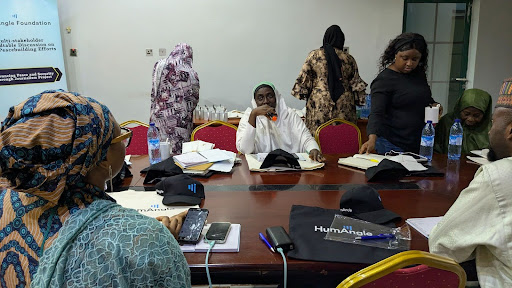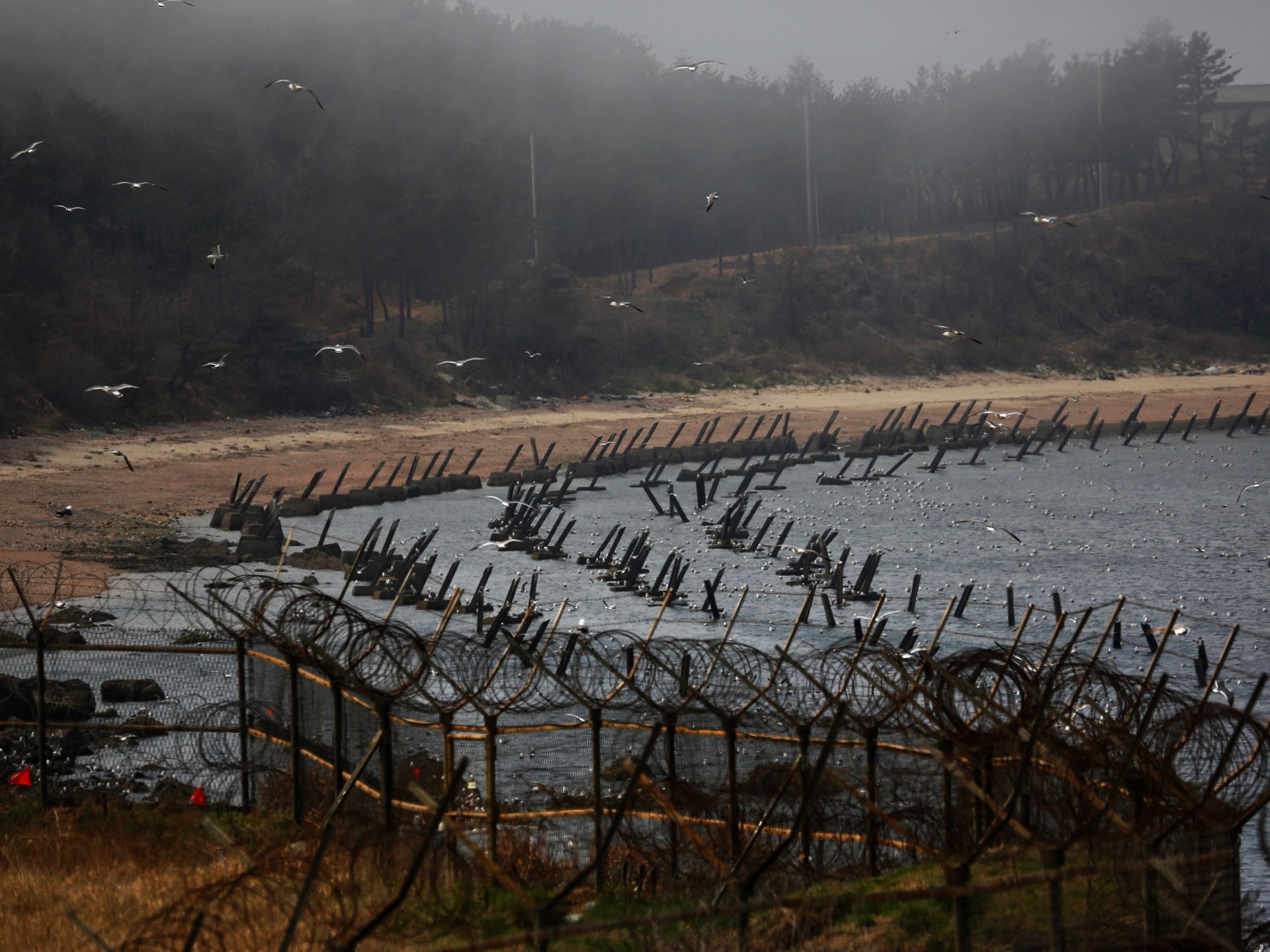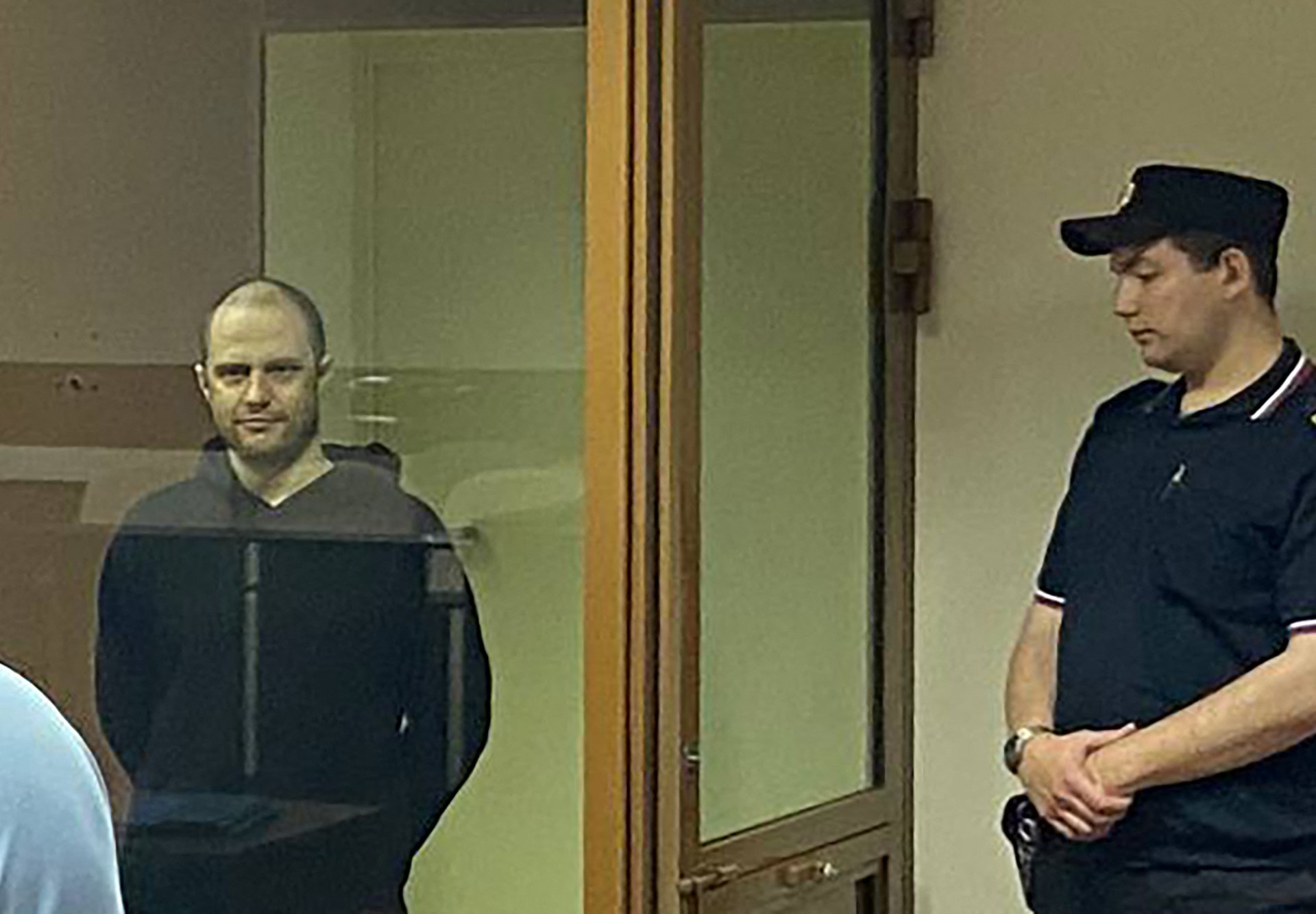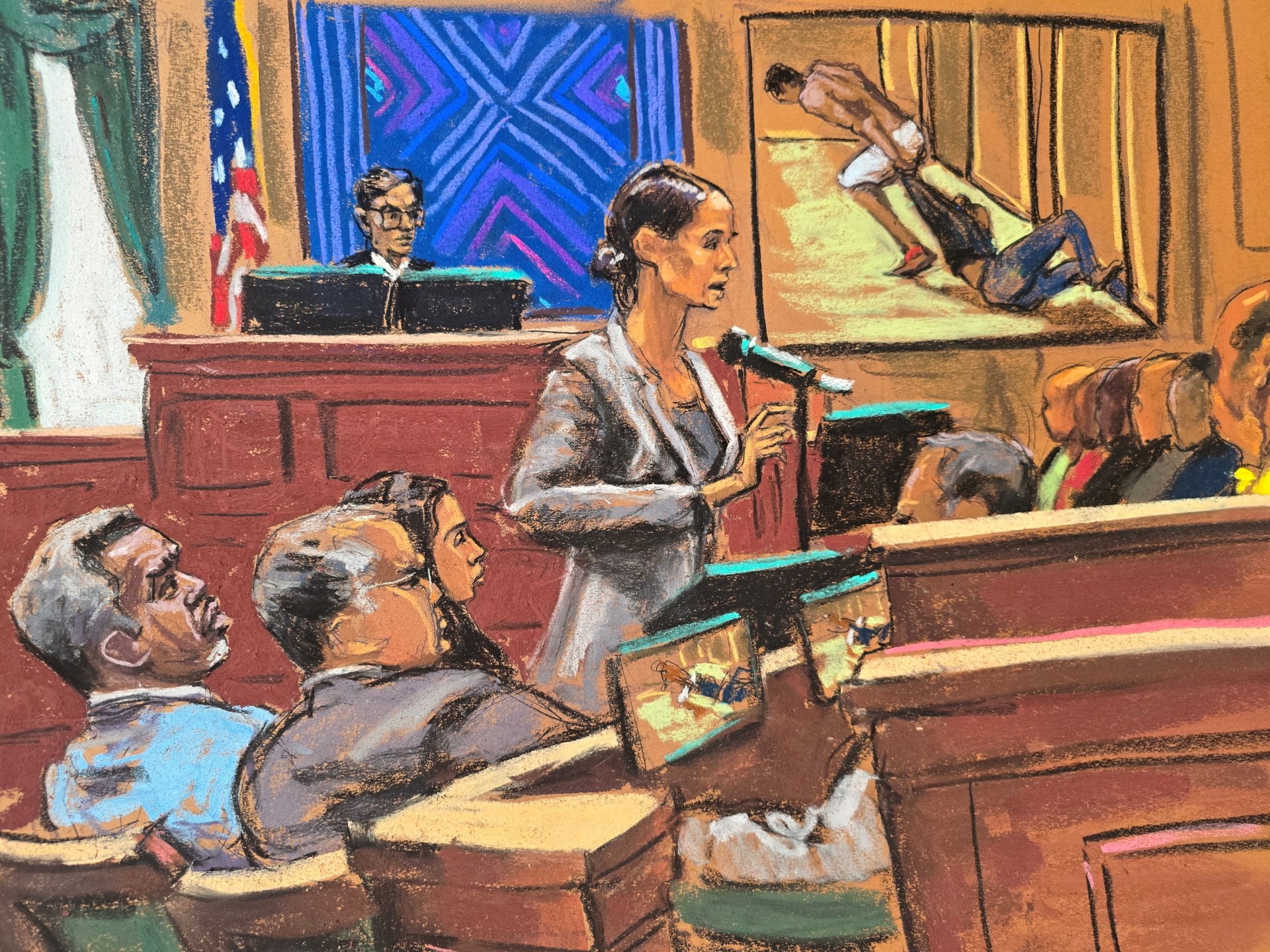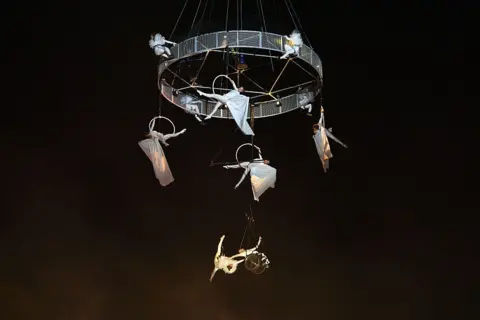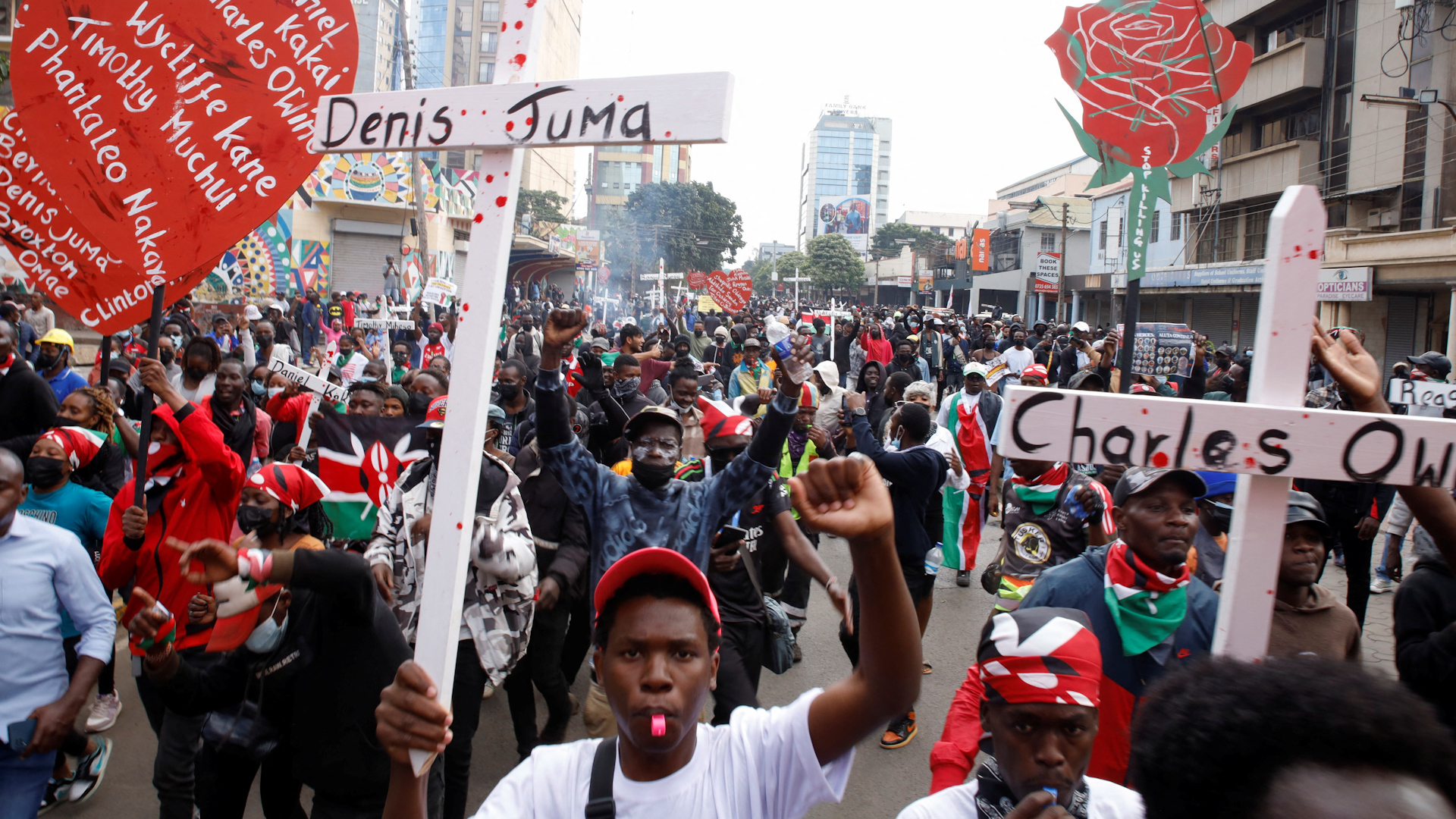Putin confirms he wants all of Ukraine, as Europe steps up military aid | Russia-Ukraine war News
Ukraine’s European allies pledged increased levels of military aid to Ukraine this year, making up for a United States aid freeze, as Russian President Vladimir Putin reaffirmed his ambition to absorb all of Ukraine into the Russian Federation.
“At this moment, the Europeans and the Canadians have pledged, for this year, $35bn in military support to Ukraine,” said NATO Secretary-General Mark Rutte ahead of the alliance’s annual summit, which took place in The Hague on Tuesday and Wednesday, June 24-25.
“Last year, it was just over $50bn for the full year. Now, before we reach half year, it is already at $35bn. And there are even others saying it’s already close to $40bn,” he added.
The increase in European aid partly made up for the absence of any military aid offers so far from the Trump administration.
In April, Ukrainian President Volodymyr Zelenskyy offered to buy the US Patriot air defence systems Ukraine needs to fend off daily missile and drone attacks.
The Trump administration made its first sale of weapons to Ukraine the following month, but only of F-16 aircraft parts.
At The Hague this week, Zelenskyy said he discussed those Patriot systems with Trump. At a news conference on Wednesday, Trump said: “We’re going to see if we can make some available,” referring to interceptors for existing Patriot systems in Ukraine. “They’re very hard to get. We need them too, and we’ve been supplying them to Israel,” he said.
Russia has made a ceasefire conditional on Ukraine’s allies stopping the flow of weapons to it and Kremlin spokesman Dmitry Peskov repeated that condition on Saturday.
On June 20, Vladimir Putin revealed that his ambition to annex all of Ukraine had not abated.
“I have said many times that the Russian and Ukrainian people are one nation, in fact. In this sense, all of Ukraine is ours,” he declared at a media conference to mark the opening of the Saint Petersburg Economic Forum on Friday, June 20.
“But you know we have an old parable, an old rule: wherever a Russian soldier steps, it is ours.”
“Wherever a Russian soldier steps, he brings only death, destruction, and devastation,” Ukrainian Foreign Minister Andrii Sybiha said the next day.
In a post on the Telegram messaging platform on June 21, Zelenskyy wrote that Putin had “spoken completely openly”.
“Yes, he wants all of Ukraine,” he said. “He is also speaking about Belarus, the Baltic states, Moldova, the Caucasus, countries like Kazakhstan.”
German army planners agreed about Putin’s expansionism, deeming Russia an “existential threat” in a new strategy paper 18 months in the making, leaked to Der Spiegel news magazine last week.
Moscow was preparing its military leadership and defence industries “specifically to meet the requirements for a large-scale conflict against NATO by the end of this decade”, the paper said.
“We in Germany ignored the warnings of our Baltic neighbours about Russia for too long. We have recognised this mistake,” said German chancellor Friedrich Merz on Tuesday, highlighting the reason for an about-turn from his two predecessors’ refusal to spend more on defence.
“There is no going back from this realisation. We cannot expect the world around us to return to calmer times in the near future,” he added.

Germany, along with other European NATO allies, agreed on Wednesday to raise defence spending to 5 percent of gross domestic product by 2035.
It was a sign of the increasingly common threat perception from Russia, but also a big win for Trump, who had demanded that level of spending shortly after winning re-election as US president last year.
Of that, 1.5 percent is for military-related spending like dual-purpose infrastructure, emergency healthcare, cybersecurity and civic resilience.
Even Trump, who has previously expressed admiration for Putin, seemed to be souring on him.
“I consider him a person that’s, I think, been misguided,” he said after a moment’s thought at his NATO news conference. “I’m very surprised actually. I thought we would have had that settled easy,” referring to the conflict in Ukraine. “Vladimir Putin really has to end that war,” he said.
In the early weeks of his administration, Trump appeared to think it was up to Ukraine to end the war.
Putin continued his ground war during the week of the NATO summit, launching approximately 200 assaults each day, according to Ukraine’s General Staff – a high average.
Ukraine, itself, was fighting 695,000 Russian troops on its territory, said Zelenskyy on Saturday, with another 52,000 attempting to create a new front in Sumy, northeast Ukraine.
“This week they advanced 200 metres towards Sumy, and we pushed them back 200–400 metres,” he said, a battle description typical of the stagnation Russian troops face along the thousand-kilometre front.

Terror from the air
Russia continued its campaign of demoralisation among Ukrainian civilians, sending drones and missiles into Ukraine’s cities.
Russian drones and missiles killed 30 civilians and injured 172 in Kyiv on June 19.
“This morning I was at the scene of a Russian missile hitting a house in Kyiv,” said Zelenskyy. “An ordinary apartment building. The missile went through all the floors to the basement. Twenty-three people were killed by just one Russian strike.”
“There was no military sense in this strike, it added absolutely nothing to Russia militarily,” he said.
Overnight, Russia attacked Odesa, Kharkiv and their suburbs with more than 20 strike drones. At least 10 of the drones struck Odesa. A four-storey building engulfed in flames partly collapsed on top of rescue workers, injuring three firefighters.
A drone attack on Kyiv killed at least seven people on Monday this week. “There were 352 drones in total, and 16 missiles,” said Zelenskyy, including “ballistics from North Korea”.
A Russian drone strike on the Dnipropetrovsk region on Tuesday killed 20 people and injured nearly 300, according to the regional military administration.


Ukraine focused on drone production
Ukraine, too, is focused on long-range weapons production. Five of its drones attacked the Shipunov Instrument Design Bureau in Tula on June 18 and 20. Shipunov is a key developer of high-precision weapons for the Russian armed forces, said Ukraine, and the strikes damaged the plant’s warehouses and administration building, causing it to halt production.
“Thousands of drones have been launched toward Moscow in recent months,” revealed Moscow Mayor Sergei Sobyanin last week, adding that air defences had shot almost all of them down.
But Ukraine is constantly improving designs and increasing production.
On Monday, the United Kingdom announced that Ukraine would be providing its drone manufacturers with “technology datasets from Ukraine’s front line” to improve the design of British-made drones that would be shipped to Ukraine.
“Ukraine is the world leader in drone design and execution, with drone technology evolving, on average, every six weeks,” the announcement from Downing Street said.
On the same day, Norway said it would invert that relationship, to produce surface drones in Ukraine using Norwegian technology.
Zelenskyy said this Build with Ukraine programme, in which Ukraine and its allies share financing, technology and production capacity, would ultimately work for missile production in Ukraine as well.
His goal is ambitious. “We want 0.25 percent of the GDP of a particular partner state to be allocated for our defence industry for domestic production next year,” he said.
Among Ukraine’s projects is a domestically produced ballistic missile, the Sapsan, which can carry a 480kg warhead for a distance of 500km – enough to reach halfway to Moscow from Ukraine’s front line.
Asked whether the Sapsan could reach Moscow, Zelenskyy’s office director, Andriy Yermak, told the UK’s Times newspaper: “Things are moving very well. I think we will be able to surprise our enemies on many occasions.”
Trouble with club membership
Ukraine’s ambition to join NATO and the European Union, leaving Russian orbit, is what triggered this war, and Russia has said that giving up both those clubs is a condition of peace.
NATO first invited Ukraine to its 2008 Summit in Bucharest. But in February, US Secretary of Defense Pete Hegseth said NATO membership for Ukraine was not a “realistic outcome of a negotiated settlement”, and a “final” ceasefire offer from the White House on April 17 included a ban on NATO membership for Ukraine.
Despite this, on Wednesday, Rutte told Reuters: “The whole of NATO, including the United States, is totally committed to keep Ukraine in the fight.”
Earlier this month, Rutte told a discussion at the Chatham House think tank in London that a political commitment to Ukraine’s future membership of NATO remained unchanged, even if it was not explicitly mentioned in the final communique of the NATO summit.
“The irreversible path of Ukraine into NATO is there, and it is my assumption that it is still there after the summit,” Rutte said.
If that gave Ukrainians renewed hope, this was perhaps dashed by the European Union’s inability last week to open new chapters in its own membership negotiations.
That was because Slovakia decided to veto the move to do so in the European Council, the EU’s governing body. Slovakia also blocked an 18th sanctions package the EU was set to approve this week, because it would completely cut the EU off from Russian oil and gas imports.
Slovakia and Hungary have argued they need Russian energy because they are landlocked. Their leaders, Robert Fico and Viktor Orban, have been the only EU leaders to visit Moscow during the war in Ukraine. Zelenskyy has openly accused Fico of benefiting personally from energy imports from Russia.
In a week of disruptive politics from Bratislava, Slovakia also intimated it could leave NATO.
“In these nonsensical times of arms buildup, when arms companies are rubbing their hands … neutrality would benefit Slovakia very much,” Fico told a media conference shown online on June 17. He pointed out that this would require parliamentary approval.
Three days later, the independent Slovak newspaper Dennik N published an interview with Austria’s former defence minister, Werner Fasslabend, in which he said Slovakia’s departure from NATO might trigger Austria’s entry into the alliance.
“If Slovakia were to withdraw from NATO, it would worsen the security situation for Austria as well. It would certainly spark a major debate about Austria’s NATO membership and possible NATO accession,” Fasslabend said.

